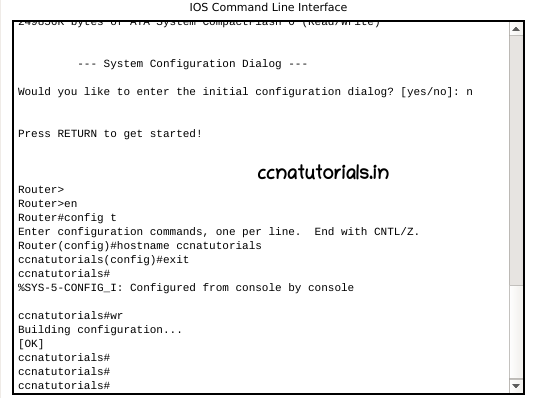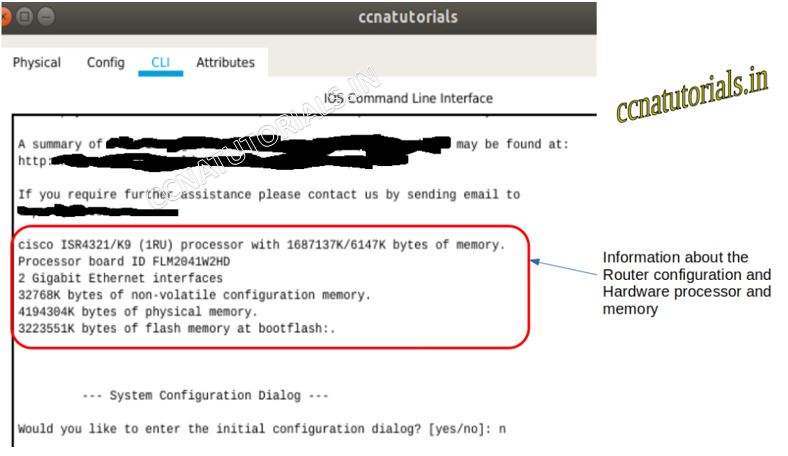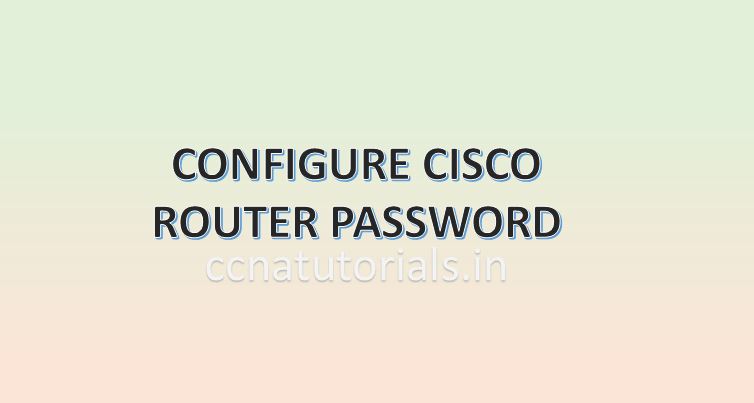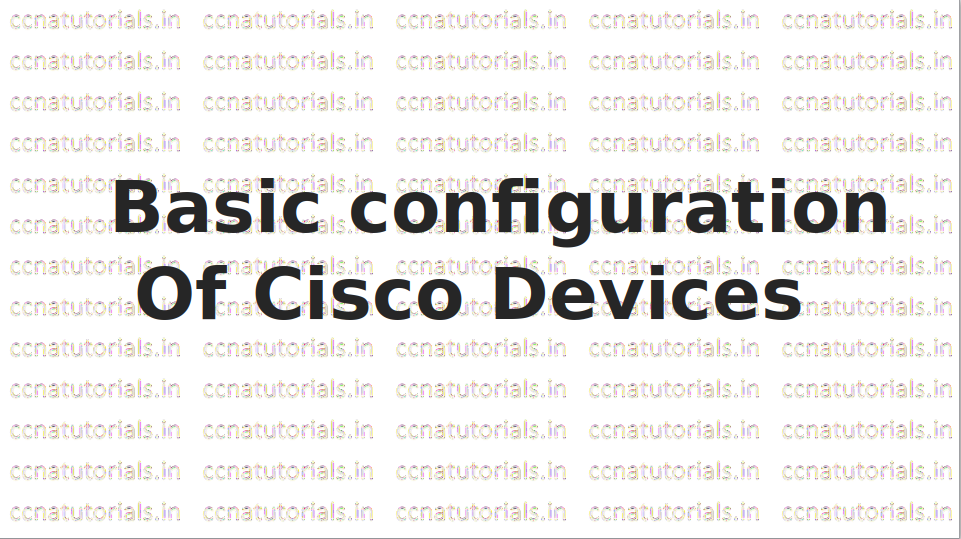In this article I describe the Command Line Interface CLI in Cisco IOS like routers and switches. IOS is acronym for Internetwork Operating System which is related to Cisco networking devices. IOS Internetwork Operating System provides the facility to configure and maintain the networking devices in the network. The network administrator can change the configuration and maintain the networking device in a network by using IOS.
IOS is an application which run as operating system for the networking devices like router or switch. Command Line Interface CLI in Cisco IOS provide a command line interface to a remote computer for network administrator. IOS load after a fix booting sequence every time when we boot the router or switch. So before learning about the Command Line Interface CLI in Cisco IOS lets see some basic fundamentals of IOS Internetwork Operating System. You can also read the IOS booting sequence here.
IOS Internetwork Operating System
IOS Internetwork Operating System is a Cisco propriety for Cisco networking devices like routers and switches. Network administrator can take the CLI of any networking device from a computer in the network. CLI is generally know as the Command Line Interface CLI in Cisco IOS. All the routing configuration and other settings saved in the IOS Internetwork Operating System of router.
IOS Internetwork Operating System provide to do any changes on any interface or the router or switch. IOS Internetwork Operating System provide to maintain the networking device from a very far location remotely. IOS of Cisco can be integrated with other networking devices like IBM and SNA. The Command Line Interface CLI in Cisco IOS is very user friendly, the user can take the help about any command from CLI of a device.
The IOS Internetwork Operating System allow to configure the encryption, routing and authentication in the router or switches. IOS Internetwork Operating System have three variants XE, XR and Nexus. The XE version available with aggregation service routers and catalyst switches. XR version available with carrier routers. Nexus allow to configure the Nexus family devices. Before IOS Internetwork Operating System Cisco run the CatOS on its networking devices. IOS Internetwork Operating System is operating system independent means you can run the IOS on windows as well as on Linux or Unix operating system. The IOS developed in the decade of 1980 for Cisco routers.
Command Line Interface CLI in Cisco IOS
the Command Line Interface CLI in Cisco IOS provides some preset commands for maintain and configure the networking devices. There are multiple command modes provided by the Command Line Interface CLI in Cisco IOS. The command modes are EXEC mode, Privilege Exec mode, Global Configuration mode, ROMMON mode and setup mode. Each mode provide some additional features of various level for configuration the router or switch. The router and switches are microprocessor based so the IOS Internetwork Operating System works like an operating system for computer. When we start the computer the operating system of computer boot in a fix sequence. Similarly the IOS Internetwork Operating System have a fix booting sequence.
Types of memory used by Cisco routers for IOS Internetwork Operating System
There are multiple types of memory available in the router which takes part in the IOS Internetwork Operating System. It is necessary to know about the various types of memory used in router for various purpose. We can say that each memory is responsible for different task for the IOS Internetwork Operating System. A Cisco router contains four main memories RAM, ROM, NVRAM and Flash memory.
RAM stands for Random Access Memory which is like a RAM in any computer. In a Router, RAM stores the running configuration and routing table with routing protocol. The IOS loaded in the RAM After the completion of IOS Booting sequence in the router. RAM stores the data until the router is power ON. After shutting down the router, all data stored in RAM will erase automatically.
ROM the Read Only Memory stores the data permanently in it. The ROM loaded the previously saved configuration in IOS Internetwork Operating System of router. Mostly the bootstrap start up program stored in ROM. The initial function known as POST is also stored in ROM and run during the first step of IOS Booting sequence in router.
NVRAM memory is a type of RAM but it is Non-Volatile. The data saved previously in the NVRAM loaded after completion of IOS Booting sequence in router. It means the data stored in it doesn’t depends on Power on or off. We can write the data multiple times on it. ROM is read only memory. The main difference between NVRAM and ROM is that data of NVRAM can be changed by configuration.
Another type of memory available in router is Flash memory. Flash memory keep save the IOS image. Flash memory is read and writable memory. In case of any error in the IOS Booting sequence the image of IOS can be used for booting the router.
Command Line Interface CLI in Cisco IOS in brief
The Command Line Interface CLI in Cisco IOS allow user to maintain and configure the router. All internetworking devices provides an Command Line Interface CLI in Cisco IOS for configuration and maintenance. All Cisco routers and switches runs on IOS. IOS stores the configuration, link states, protocols and everything what we use for internetworking. The configuration and setting of switch and routers can be done via Command Line Interface CLI in Cisco IOS. The Command Line Interface CLI in Cisco IOS provide the Command line interface to the user. The CLI works on commands only. The Command Line Interface CLI in Cisco IOS is command line interface for working with IOS. You must know the commands before going to configure any router or switch. You can also refer the CLI for various commands by typing the question mark. In this article we discuss about Command Line Interface CLI in Cisco IOS basics only.
Command Line Interface CLI in Cisco IOS explained
Think about Operating system of any computer which is very similar to IOS, It may be windows, MAC or Linux etc. The purpose of Command Line Interface CLI in Cisco IOS is same as of Operating system of computer. With the help of Operating system, you can access the memory, configure various input/output ports. Similarly, the IOS provides the Command Line Interface CLI in Cisco IOS for configure and manage the Cisco devices. The devices may be Cisco routers or catalyst switches. Cisco and non-Cisco all network devices have their own IOS.
An element of any operating system is responsible to do changes in hardware interfaces. This element is well known as kernel of Operating system. Similarly, The IOS works like a kernel to make changes and keep save the configuration in router and switch. You can use the Command Line Interface CLI in Cisco IOS for various configuration and maintains of Cisco router and switches.
Function of Command Line Interface CLI in Cisco IOS in Cisco devices
The main function of Cisco Command Line Interface CLI in Cisco IOS is to provide the data communication between network devices and nodes. The routing and switching functionality in networking device is responsibility of IOS. In addition of above data encryption, encapsulation, security can also be configured by IOS interface. These all settings can be set by the user interface. User can take the Command Line Interface CLI in Cisco IOS through the console port in switch and router. Telnet and Secure Shell (SSH) can be used to connect with IOS interface. The user interface is command line prompt. Accessing the IOS command line interface is known as EXEC session.
Command line interface is very common to manage and configure the Cisco devices. When we power on any Cisco networking device we got a command line interface CLI on the screen. The command line interface CLI look like the image below. It will allow you to show, edit and create new configurations in the router’s IOS. In this article we will discuss only the overview of command line interface of Cisco router. Later on the command modes and types of configuration will be discussed.

The command line interface is a text based interface. It allow a user to read the existing configuration in the IOS of the router. User can make changes to the existing settings and also create the new configurations according to requirements. The very first need is to connect the router with a computer.
Connecting the router with a computer
There are three methods via which you can connect a router with the computer. These are console, telnet and SSH. You can connect the router directly from any computer via console cable. The console cable port is available in all Cisco router. This console port is separated from all other ports. You can identify it very easily. You have to connect this port with the com port of computer. After creating the successfully connection you can use the hyper-terminal or putty to take the command line console of the router.

Telnet is used to take the command line console from a far away computer. To take the telnet command line console your computer should be connected to the router. You can take the telnet command line console via port IP address of the router. You have to type telnet in the command prompt followed by the IP address of router.
Similarly to telnet SSH also used to take the command line console of the router. Telnet and SSH command line console are not required to get a physical touch to the router. Only console port are physically connected to the router. Telnet and SSH connected with virtually IP address of any port of router except console port.
Over view of command line interface CLI of cisco router
In the image below this paragraph, you can see the command line interface of a router. When router initially boot you can see the information which used by the router. There are version of IOS, available memory and basic configuration display in the command line interface. You can set the basic parameters of router like host name, date time etc form the command line interface. By entering in the config-t mode you can assign the various parameters to the interfaces of the router.

I think it is enough for introduction to command line interface of a Cisco router. In next article we will discuss the mode of command of a Cisco router.
I hope you found this article helpful. For any query or suggestion on this article contact us or drop a comment below. Your suggestions are always welcome by us.






